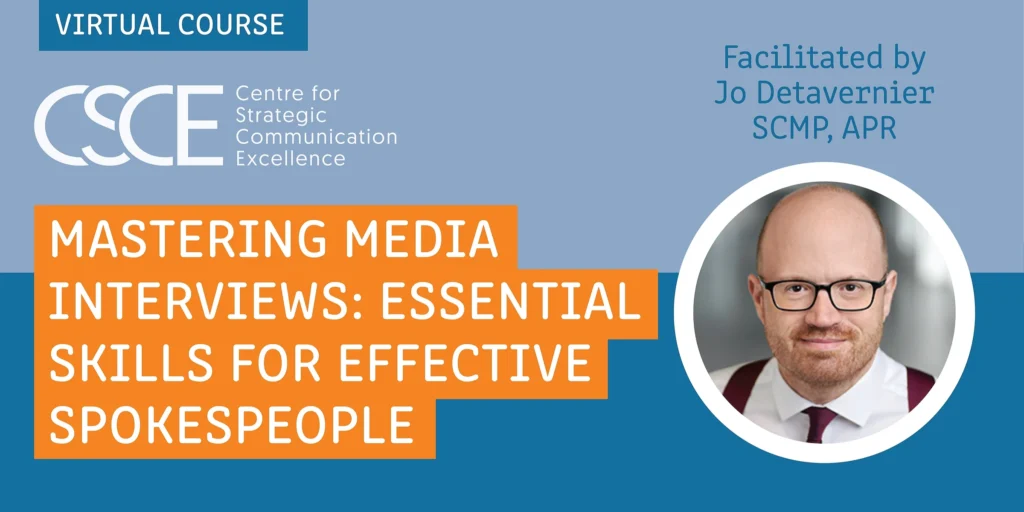This is a true story which had its genesis several years ago on a bitterly cold winter’s day.
Late on a Friday afternoon, I received a call from the president of a huge aluminum processing company. He was in the middle of labor talks, and things were going badly. In addition, he had just learned from his manager of health and safety that the Natural Resource Defense Council (NRDC) had publicly announced that day in Washington that his plant was a national target for reduction of excessive aluminum oxide emissions. (Aluminum oxide, at that time, was on the U.S. Environmental Protection Agency’s list of toxic substances. It has since been delisted.)
On top of this, the union and the NRDC had apparently formed a team to bring pressure on the company from different directions. The CEO’s general counsel had found me through a colleague suffering a similar fate. The CEO wanted me to arrive on Sunday night so that I could spend some time with the senior management team before all hell broke loose. He mentioned that his director of corporate communications (whom I will call Susan) would meet me at the airport Sunday night.
As I came off the plane there was a young (younger than me) woman standing there examining each passenger as he or she walked by (this was well before the security imposed by 9/11). When she called out a version of my name, I realized that it was Susan and introduced myself. She told me to follow her to the baggage claim area. I sensed a little tension. I was taking up her personal family time, coming in Sunday evening, somewhat late.
My bags arrived, and as we walked to her car, I asked a couple of perfunctory questions about the weather and how things were going. She remained really quiet. As we put the luggage in the trunk, she said, “The boss only told me yesterday that you were coming in.” Not a good start, but I mentioned that the boss and I had talked a couple of times during the week and that he had only invited me late Friday afternoon.
As she started the engine, Susan mentioned that for my departure there would be a cab or car service to get me back to the airport. As we got on the highway heading toward town, I said, “Why don’t I tell you about what I envision happening in the next day or two, so we can make some plans?” She grunted, which I took to mean okay, and I began to outline what I saw the various meetings and activities to be, how we would start very early and rumble on through the day.
After I had been talking for a few minutes, she looked at me and essentially exploded. “I’ve been here nine years—nine long, hard years. I’ve learned a lot, I know a lot, I help these people every day, and still they call in someone like you,” she said. “I’ve worked with consultants most of my career here and even before I came here. You all make little messes in different places that I have to clean up or live with after you are gone, and even with all the access people like you get to the CEO and other important people, they still wind up coming to me and taking my advice. But most of you do more damage than you realize and much more long-term harm to me and my communications program and what we’re trying to accomplish here with very limited resources.” She also indicated that she felt a little betrayed by her boss because he only mentioned inviting me when he told her to pick me up at the airport.
By the time she finished airing her complaints, we were at the hotel. My final comment to her was that there were going to be a number of meetings that I would attend but to which she would not be allowed. I told her that I would do my best to get her into those meetings. Whatever transpired in those meetings I would share with her fully, and I’d make sure that she was as much in the loop as she could be. She grunted again and left.
The next day, we passed each other several times. As it turned out, we were in most meetings together, but there were several that were just for operating people and me. She and I chatted a couple times about things we were learning, and I briefed her on those meetings I had attended without her.
The second morning, the last day of my visit, we crossed paths, and Susan rather cheerily said, “I’m taking you to the airport this afternoon myself.” This was probably a good sign. I wondered what had changed. Maybe she just wanted to confirm that I had left town.
As we packed up and started for the airport, I asked her why she had decided to drive me there. She said, “I’ve been watching you very carefully for these two days, trying to figure out why they call people like you when I’m here. I’ve paid my dues, and it seems to me that we give almost identical advice.”
“What did you learn?” I asked. She responded by saying that she had observed some things that made her think a lot more carefully about how she does her own work. I asked for an example.
She talked about how I handled highly charged topics in large groups. She mentioned that her style, when she wanted to make a point, was to push as hard as she possibly could. “It doesn’t seem to go so well, very often,” she said. “They like my ideas when the news is good, but they become hard of hearing when the news isn’t so good. But you have a way of telling stories or giving examples that tend to blunt people’s feelings or emotions, so they let you continue talking, and they listen. Many are writing while you are speaking. You have the habit that when attacked by one individual, you turn your back, and then, talking to someone else, you respond to the person who had attacked you or your idea, but to someone else. That was a very interesting technique.”
“Why?” I asked.
“Because it worked.”
So I asked her, “What did you learn from that?”
She said, “I need to think less about achieving the point I’m trying to make and see if I can’t find other ways to stay in the conversation that are meaningful to everyone in the room. I’d like them to write down what I say… everybody is writing when you talk, including the boss and me.”
“What else did you learn?”
She said, “You tend to use small numbers a lot when you talk—two, three, and four, mostly. I know this is intended to focus discussion, and it seems to get things moving. I thought that was a very helpful technique and something I could do if I thought about it.”
“Of course you can,” I said, “and of course you should. Using small numbers like that is very powerful, and does keep people better focused on what we are trying to accomplish. It is how I force them, sometimes almost against their will, to write things down. What else did you learn?”
“The biggest thing is the stories. You seem to have a story for everything. It sounds as though you’ve worked in every industry, worked on every kind of problem imaginable, and you have all these lessons to share through stories. This is my biggest problem. I’ve only really worked here. I don’t get out like you do, to see a lot of things and have the ability to collect stories that might help me give more powerful advice.”
“Do you belong to any professional communicator associations, or organizations for HR people or administrators?” I asked. She said she did and talked about a couple of them. I suggested that because she probably had a lot of vacation time built up (which she immediately agreed she did), she should take occasional days off to visit her colleagues and take a look at what was happening in those businesses, for the express purpose of developing or pulling together stories she could use in a variety of settings in her own work.
“Anything else you noticed that seemed important to you?” I asked.
“You do seem to be much more comfortable in the presence of our senior people than I often am. But I still think the advice I give is at least as good as yours, and ultimately that will be what people rely on.”
I asked, “Do you think it’s important that we give the same advice?” She said she thought so because too many distractions and different ideas would interfere with solving problems.
My response was that if I am successful, typically I can make one, two, or at the most three things happen that are significant in terms of moving the process forward and finding solutions or answers. And in most cases, those solutions, answers, or insights rely on existing internal processes and people for execution, as well as those executives and, usually, the boss, who take on the advice as their own.
I then asked if she knew or could guess why the boss had called in someone like me, as well as a variety of other outside voices that she had not expected, without telling her and lots of others either.
“Yes,” she said. “It hit me the first meeting of the first day. He’s afraid, and his job may well be on the line if things really go badly here. He wants to be sure that he covers all his bases and is making the best decisions possible. And he wants a broader range of options to choose from. As much as I hate it, I know he needs to go beyond the advice and advisors he has every day to feel confident.”
“This may be the biggest lesson from your visit,” she said. “Our job is to provide a suitable menu of alternatives from which the CEO will select the ingredients for solutions and actions.”
“That’s right; it’s never about the advisor,” I said. “He’s facing at least one career-defining moment. And one is all it takes. He’s getting all of his advisors aligned, organized, and ready to work before his struggle begins. The goal is to have a variety of ideas to choose from rather than on locked-up approach that he’s stuck with.”
As we neared the airport, I told her that one of the things I admired about her boss was his ability to actually accept, absorb, and apparently apply the advice he was getting. This was a major weakness in many executives with whom I have worked, especially when there is serious trouble, and staff that refuses to alter their opinions or advice. I also told her that at every opportunity, the boss and other senior executives had praised her and said they could rely on her thinking and advice. Clearly, she was highly regarded.
The lessons Susan learned are powerful for every advisor who wants to be trusted and wants to play at a strategic level. Her story illustrates the transition even experienced pros need to make to become more effective advisors to senior leaders. This kind of work really requires putting yourself in the other person’s shoes, looking at the world from his or her perspective, and letting that approach dominate how you think, how you speak, how you coach, and how you contribute. It also means recognizing that the boss is rarely looking for advisor consensus or that single big idea, but rather good solid insight, options, and even conflicting views for his or her own decision making. Executives execute based on the choices at hand, especially when the clock is close to running out.
The greatest lesson of the day for Susan was the realization that being at the table is less about getting your point across and some of them adopted, but rather, being at the table.
Operators tend to make arbitrary decisions about when staff help is needed and that’s why, especially communicators, come and go from meetings at the pleasure of the meeting convener. However, the goal of the trusted advisor should be to be a part of the table process constantly and that’s achieved by being more flexible, more a listener than a talker, and recognizing that the real learnings for staff people from these situations is observing all the players, all the time. The really important consultants and counsellors recognize that the real value of them being a part of the leadership process is their own ability to learn how others think, react, and are perceived by decision makers. The one thing communicators always know is that sooner or later, probably later, leaders will come to them and ask for help to get things finalized, started, or ultimately stopped. Being a trusted advisor is constantly improving your access, your influence, and the impact of what you do at every level of management concern.
Susan remained a colleague until she retired.





